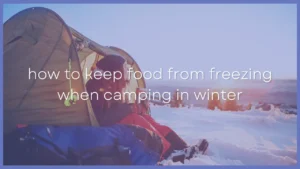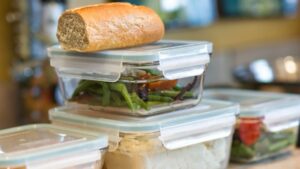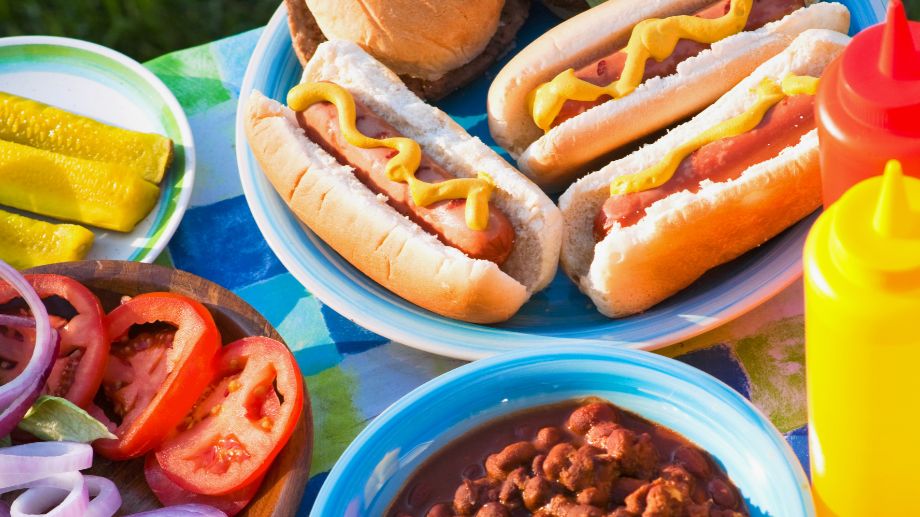
There is nothing better than sitting down at a park with friends to eat a warm, home-cooked meal. However, it can be difficult to keep picnic foods warm for an extended period of time if you don't know what you're doing.
No one wants to sit down to cold soup or a hot pasta that just isn't hot anymore. White it may seem difficult to keep picnic food warm it's actually quite easy with the following techniques.
To keep food warm for a picnic heat it up extra hot just before leaving and transport the food in some sort of insulated container, cooler or a thermos. The better the insulation the longer your food will stay hot. Supplement your hot food with hot water bottles or heat packs to help them stay hot even longer.
Denser foods like soups will stay hot much longer than lighter foods like breads and pastries. It's also a good idea to make sure you cover and keep the food in it's insulation whenever you're not accessing it, otherwise heat can quickly escape.
Adding warm food to the menu will entirely change how you picnic—for the better, of course. Keep reading to learn about insulating your picnic food to keep it warm!
How to Insulate Warm Picnic Food – 3 Key Principles
While there are a variety ways to keep your picnic food warm in this list they all follow just a few basic principles. By understanding these principles you can combine different tips and keep your picnic food hotter for longer.
The 3 main principles are:
Start With Extra Hot Food
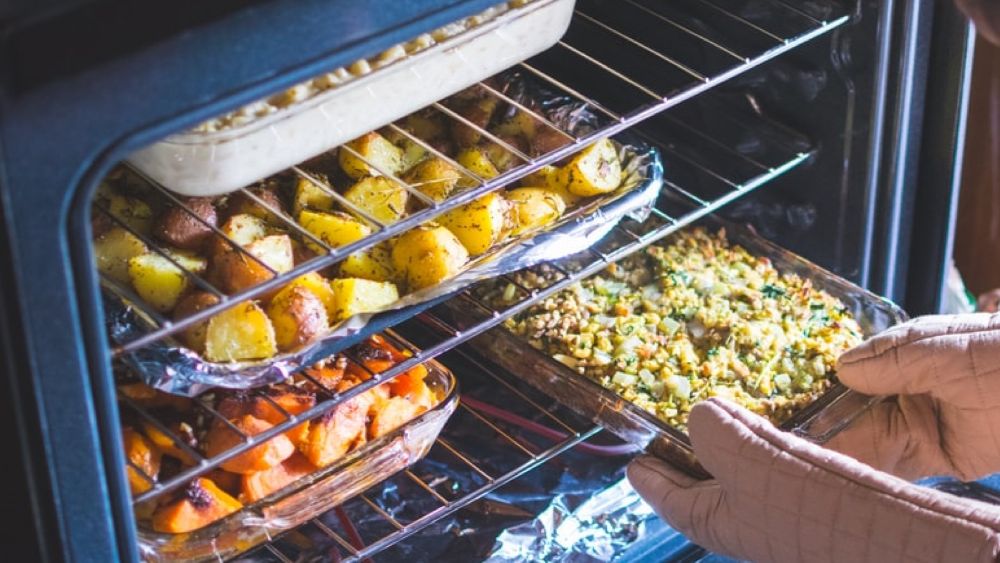
Expect that your picnic food is going to cool down somewhat between when you make it and when you sit down to eat it. For this reason you'll want to make your food hotter than you actually want it to be.
By doing this as it cools down it'll hopefully be the ideal temperature when it comes time to eat it.
Keeping food over 140ºF/60ºC also keeps it from growing bacteria that can be harmful to you. While food below that temperature can more easily grow bacteria rapidly and spoil the food.
So always try to overheat your food slightly when preparing it so it can cool down and be the perfect eating temperature when it comes time for your picnic.
Insulate Your Food As Best As Possible
Next you want to insulate your food as best as you possibly can to stop the heat escaping from your food.
There are many different ways to do this. Vacuum insulation is the most effective insulation to keep things cold or hot but aluminum, foam, plastic and other items like towels, blankets or sweaters can all work to trap heat and keep your food warm.
As a rule, the better and thicker your insulation the longer your food will stay hot for.
Increase The Total Heat Energy
The more overall heat energy something has the longer it'll take to cool down. This is why a bath can stay hotter for longer than a small cup of hot water and a swimming pool is incredibly difficult and time intensive to warm up.
Either make food that is dense (eg. soup) and therefore contains a lot of heat energy, or add heat energy in the form of heat packs, hot water bottles, hot bricks etc to keep less dense food warm for longer.
By adding hot items your food can pull heat from these items keeping themselves hot until you're ready to eat them.
1. Aluminum Foil + Towels/Sweaters/Blankets
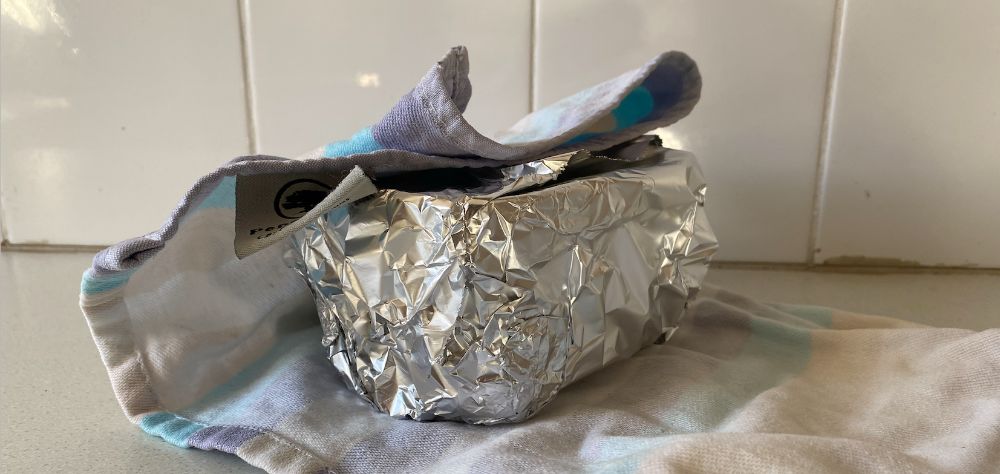
Wrapping hot food in aluminum foil and towels or sweaters, is a great way to retain heat and keep your food hot. You'll often see people bringing hot food to parties in aluminum foil, and there's a good reason for this.
The aluminum foil traps steam from escaping (which takes with it a lot of heat) but it's also a very effective thermal insulator. It reflects back heat radiation from your food keeping it hot.
However, heat does pass through aluminum in the form of conduction so you also need to use some other form of insulator to keep it hot for longer.
Tea towels and regular towels wrapped around your food work well to retain heat. But, as we mentioned previously, the better and thicker your insulation the longer food will stay hot.
Sweaters or blankets are often better insulators than towels and wrapped around your food once (or a few times) it'll work well to keep your food hot.
Even if you're putting your food inside an insulated picnic bag or a cooler I'd still recommend the aluminum foil and towels. The closer the insulation is to the item you're trying to keep warm the better.
2. Use A Cooler
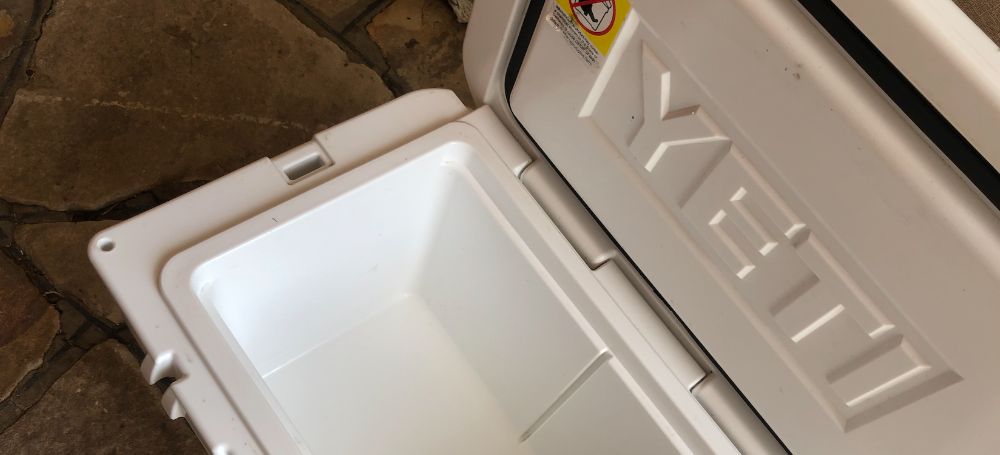
We usually think about coolers as items that keep things cold for your picnic. Chances are you've used a cooler for sodas and beers and even to keep food cold.
But that same insulation that keeps heat out and keeps your drinks cold can work to keep heat in a keep your food hot. Coolers are actually one of the best ways to keep food warm.
Although coolers are primarily used for keeping food cold, their function is simply to insulate the contents. If the contents are cold, that means trapping cold air inside; however, if the contents are warm, that means holding the warm air inside.
Coolers come in all shapes, sizes, colors, and capacities. There is a cooler out there perfectly designed for your picnic.
If your picnic is at the local park, use a larger one and load it into your car. If you plan on biking or walking, purchase a lunch box-sized cooler that you can sling over your shoulder.
While you likely already have one set aside for keeping drinks and cold food cool, you can also use one to keep food warm. The higher quality the cooler the longer the cooler will keep food hot for.
The only thing you need to be cautious about when using a cooler to transport hot food is melting the plastic.
As you already know, you should have pulled the food directly from the oven and put it in the cooler immediately. If the dish is too warm, it could begin to melt the plastic.
Consider lining the cooler bottom with hot pads or dish towels to protect the plastic if you're storing very hot items.
3. Heat Packs, Hot Water Bottles or Hot Bricks

Sometimes your food needs a little bit of help to stay hot. In the same way you use ice packs in your lunch box to keep food cold you can use heat packs and hot water bottles to keep things warm.
There are a variety of different options you have here. You can use rice heat packs that you heat in the microwave, you can make hot bricks for your cooler to keep things extra hot or you can use reusable instant heat packs that you activate once your food starts to cool down a bit.
But my preferred heat pack is a simple hot water bottle. Water has some of the highest heat capacity of any common substance so by filling a hot water bottle with boiling water it adds A LOT of heat energy to your picnic basket and it will last a long time to keep food hot.
Put the hot water bottle in the cooler or insulated bag with your hot food or an even better idea is to place it touching your food then wrap up your food and the hot water bottle in blankets like we mentioned before.
Toss a couple of heat packs into your cooler or other hot items, and you're sure to have warm food when you arrive at the picnic. You could even transport your food in a cardboard box with the help of heat packs – they are that good!
Click here to see some affordable reusable instant heat packs at Amazon
4. Thermoses

A thermos is a classic way to keep liquid foods and drinks warm at picnics. Vacuum insulation is actually the best insulation to keep food cold or hot and so food inside a thermos can stay hot MUCH longer than food just wrapped in aluminum foil and towels.
You can purchase thermoses in various sizes, meaning that there's one perfect for your picnic food carrying needs.
Thermoses are small enough that they can fit in backpacks and some purses. In other words, if you're walking, biking, or hiking to your picnic, a thermos is the way to go.
I love using thermoses to keep my coffee hot when I go on bush walks or it's also great for keeping soup warm – which is perfect for a chilly winter picnic.
Since thermoses come with an easy screw-on lid, you can rest assured that you'll arrive without having spilled any of the food or drink.
You can also now get thermoses with extra wide openings specifically designed for food. They are one of the best ways to keep pasta hot and my kids use them for school lunches all the time.
See the latest price of Hydro Flask Food Canisters at HydroFlask.com
(or compare to the latest price of Hydro Flask Food Canisters at Amazon)
5. Thermal Cooker
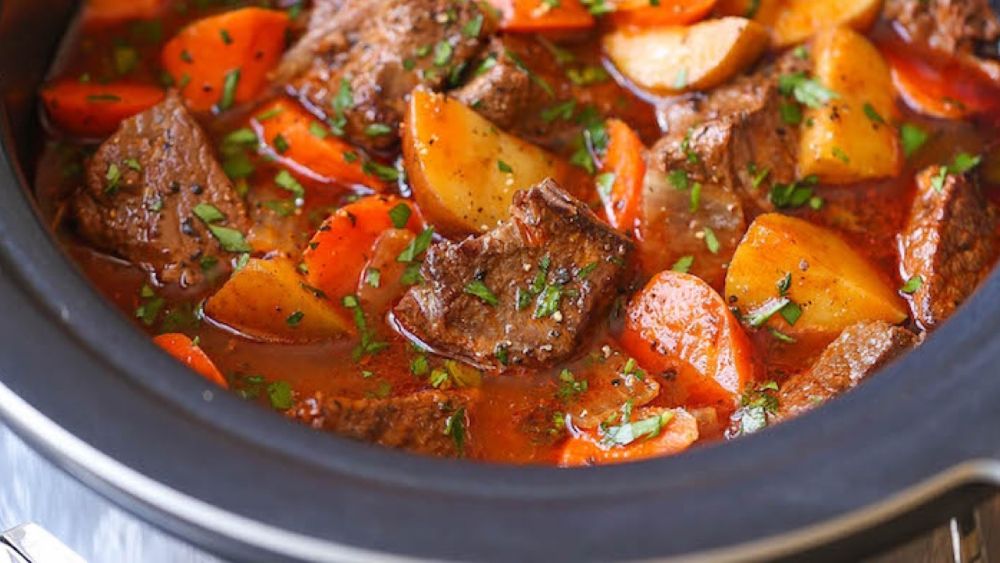
A thermal cooker is like one big giant thermos. It uses vacuum insulation to keep things hot for an extremely long period of time (just like a thermos) but it's big enough you can store large quantities of food it in.
The more heat energy your have the longer things take to cool down. So a large thermal cooker filled with food will stay hotter than a small thermos of food.
I like using my thermal cooker to pack pasta or soups for picnics and they can even be great for keeping ice cream frozen without a freezer.
If you're storing hot items like hot meat then a thermal cooker can be one of the best options and you can even fill them with boiling water and keep hot dogs hot for picnics.
Most thermal cookers will work great but I personally own and recommend the Stanley Thermal Cooker/Camp Crock. It's affordable, the lid shuts SUPER tight so there is never any leaking and it has a pressure release hole at the top making it easier to open than some other models.
See the latest prices of the Stanley thermal cooker at Amazon
6. Insulated Picnic Bags + Soft Coolers
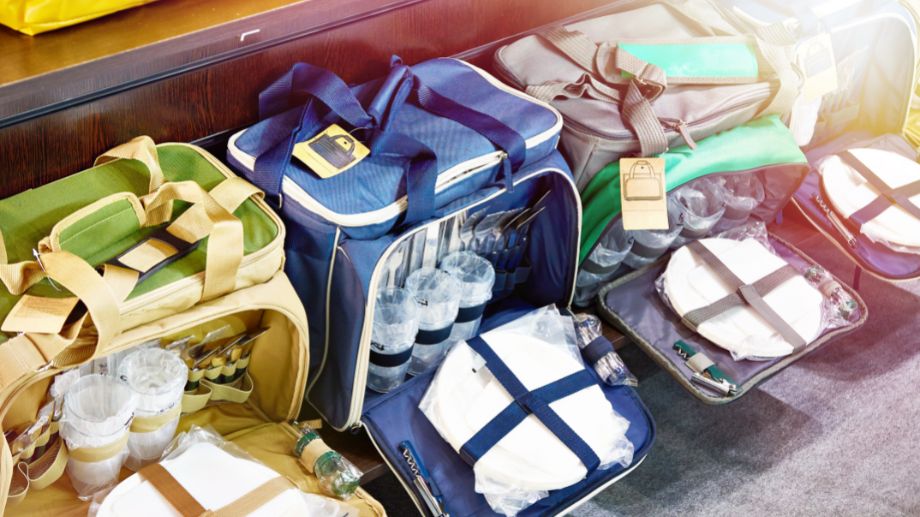
When you order a pizza, how does the driver keep it warm on the way to your house? In an insulated carrying case!
Now you might be thinking, “If they make insulated carrying cases for pizza, there have to be carrying cases for other dishes too!” And you would be right!
While you can always use insulated pizza carrying cases (available for purchase at most grocery stores), there are cases designed to carry whatever baking dish or device you need. There are even specifically designed insulated picnic baskets
Insulated picnic baskets work ok to keep food hot but they aren't great by themselves. Ideally you should combine them with aluminum foil, towels and hot water bottles like we discused.
Alternatively, soft coolers have come a long way in the last few years and some of them have really good insulating properties. You can check out the best soft coolers for ice retention as these ones will also keep food hot the longest.
You just need to be really careful with these as food that is too hot can melt the plastic liners so always use towels or blankets to insulate your food inside the soft cooler.
7. Thermal Bags
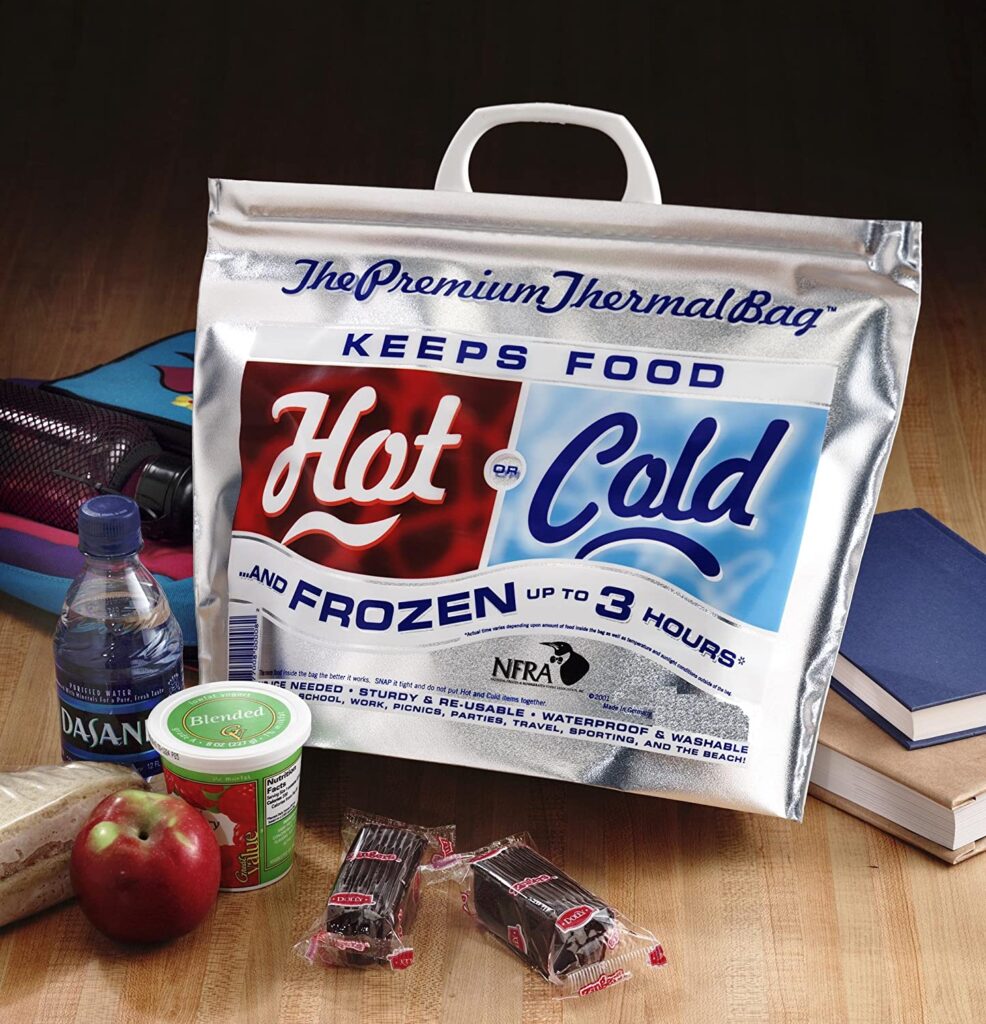
Little thermal bags that you can purchase are a great way to keep some smaller items hot for a picnic if you don't have any tupperware or aluminum foil to wrap your items in.
Thermal bags work just like the aluminum foil/towel setup. They have a reflective lining that reflects heat radiation back towards your food keeping it hot and the plastic or paper they are made out of add a bit of extra insulation as well.
They are fairly cheap so you can use them and then discard them when you're done or you can clean them and use them multiple times.
See the latest price of Hot/Cold Thermal Bags at Amazon
8. Chafing Dishes
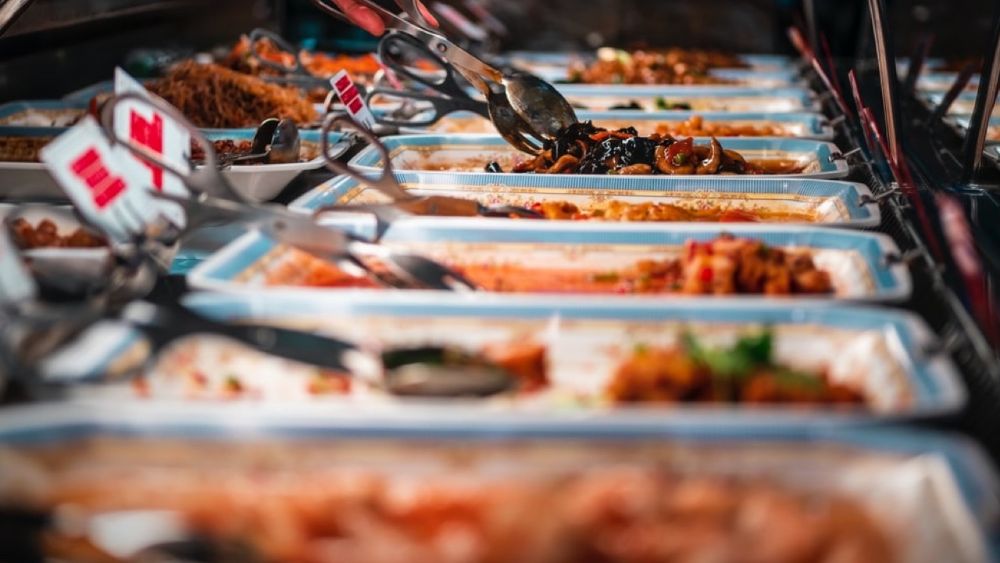
Chafing dishes can be a great way to keep food warm at a picnic if you're having a more permanent set up where you're likely to be at the picnic for quite some time or you're going to be serving a lot of people.
They use metal trays with small fuel burners underneath that provide constant heat to the dish helping it to stay warm for extended periods of time.
So many dishes can be kept hot in chafing dishes so they are a great option for some picnics.
However, the downside of chafing dishes is they're not very good for keeping small quantities of food warm and they do take a bit of set up and maintenance which can make them more cumbersome to use.
See the latest price of this affordable chafing dish at Amazon
See the latest price of chafing fuel at Amazon
9. Start With Extra Hot Food
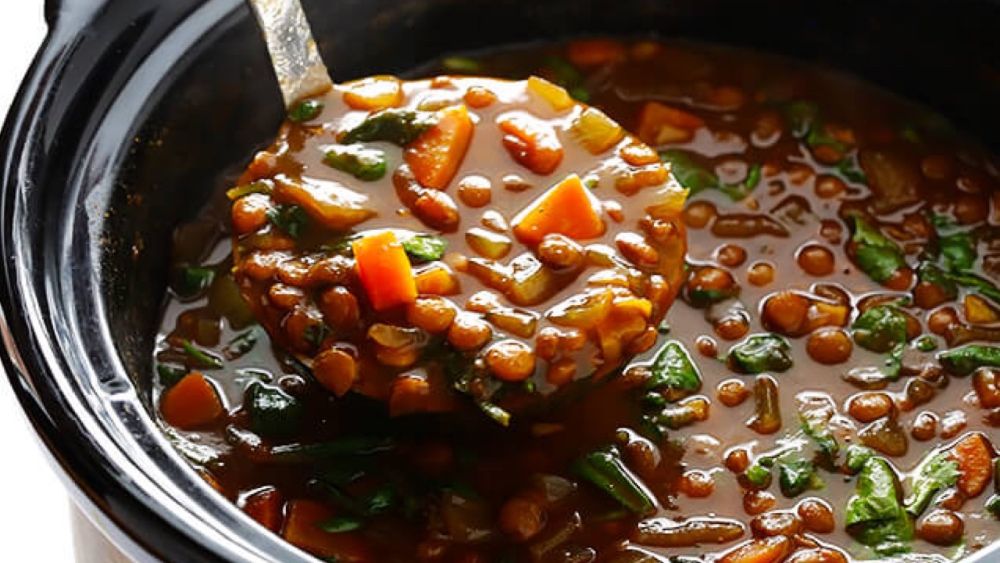
It's really important when you're trying to take hot food to a picnic that you preheat the food to an extra hot level. Hotter than you would ideally like to consume it.
You don't want to make the food so hot that you burn or ruin the food but you do want to allow some wiggle room for the food to be able to cool down and still be at the perfect eating temperature.
No matter how good your insulated picnic basket or your aluminum foil and towel insulation is, your food is going to cool down somewhat between when you leave the home and when you actually eat it at the picnic.
Prepare for this cool down by preheating your food extra hot.
10. Trap The Steam
A lot of people don't realize this but steam, as it escapes your food, takes a lot of heat energy with it and this in turn makes your food colder a lot faster.
If you can stop the steam escaping from your food than your food is going to stay hot much much longer.
Use Tupperware containers or wrap items in plastic wrap or aluminum foil to trap in the steam and stop it from escaping.
When serving your warm dishes at the picnic make sure you keep a lid on the food and only take the lid off when serving.
11. Bunch Hot Food Together and Keep Cold Food Separate
A big mistake that people make when they're trying to keep food hot at a picnic is a throw the hot and cold food all in the same bag next to each other.
Ideally you want to keep your hot food bunched together so the heat from each dish helps to keep the other dishes around it warm.
You also want to keep the hot dishes separate from the cold dishes because otherwise they will transfer heat and both end up at a lukewarm temperature rather quickly.
12. Choose The Right Kind Of Hot Food For Picnics
What type of hot food you take for a picnic will have a big outcome on how warm it is when you go to eat it.
Have you ever noticed how toast cools down extremely quickly where is hot soup can feel like it takes forever to cool down enough to eat?
This is because some foods that a lighter do not have much heat capacity and that will cool down extremely quickly while other foods that are denser have more heat capacity and take much more time to cool down.
If you want to have hot food at a picnic try to choose foods that are denser and have more heat capacity. Water is one of the best items to retain heat so any type of food that is quite moist will tend to stay hotter for longer compared to dry foods.
Warm Picnic Food Ideas
In reality, you can bring whatever warm food you want on a picnic, especially with the insulating ideas listed above. That said, some warm foods just say picnic more than others.
Pasties
When planning a picnic, you may want to bring as few utensils and plates as possible—especially if you're hiking.
If this is the case for you, pasties are the perfect solution. They can be eaten with your hands (or utensils if you prefer) and are extremely satisfying. Learn how to make them in the video below.
Once your pasties come out of the oven, wrap them individually in tinfoil and pack them into a cooler or lunch box. Toss in a few heat packs to ensure that they stay warm for transportation. Throw in a thermos of brown gravy to dip your pasties in!
Savory Muffins
When you think of muffins, you probably imagine some fruit-filled pastry served at breakfast, but muffins can be a lunch item too! Because muffins can be eaten from their wrappers, they're the perfect, utensil-free picnic food. Learn how to make savory muffins in the following video.
As soon as you pull the muffins out of the oven, cover the top with tinfoil and slip them into an insulated casserole carrier. Your picnic guests will love this unique contribution.
Sausage Rolls
Savory finger foods really are the perfect solution for picnics. And savory is always served best warm. Try out these sausage rolls for your next picnic!
After baking, remove the sausage rolls from the pan and place them inside either a casserole dish (and its insulated carrying bag) or an insulated serving dish.







